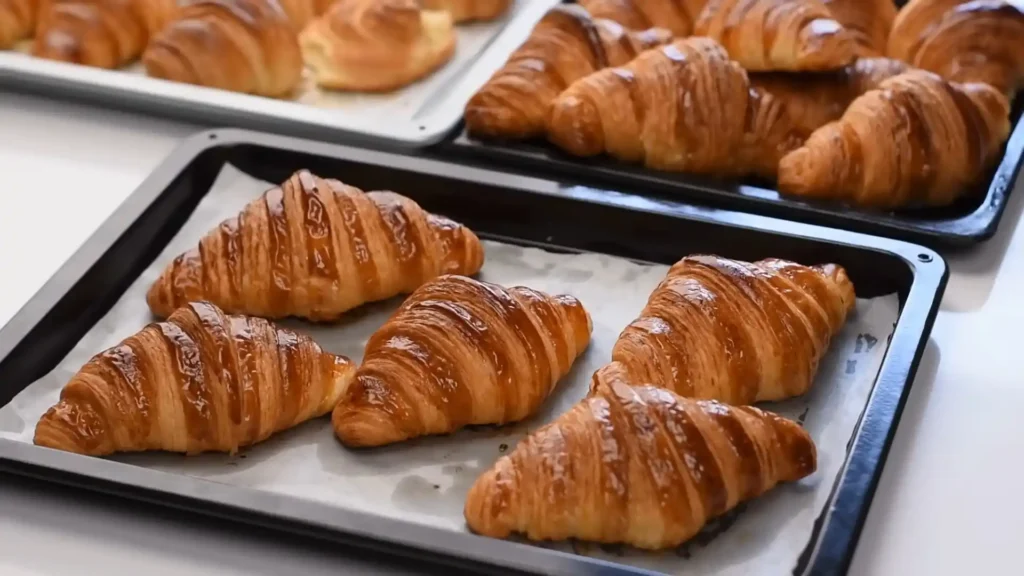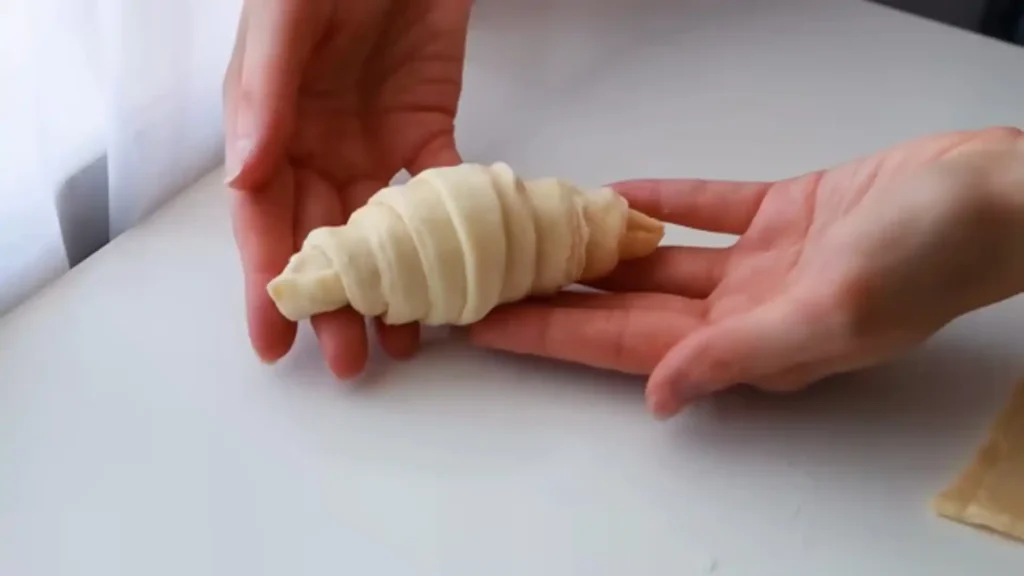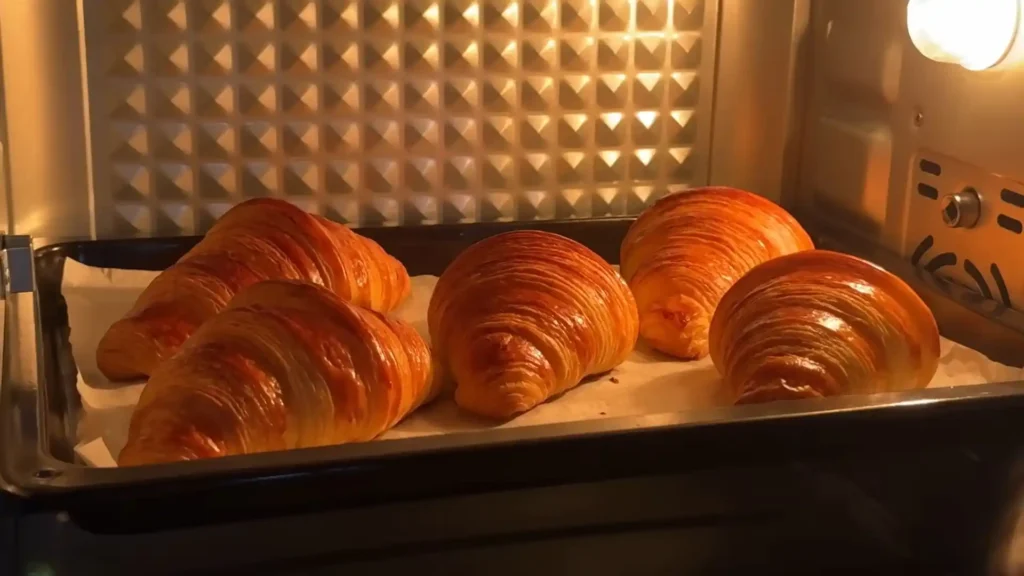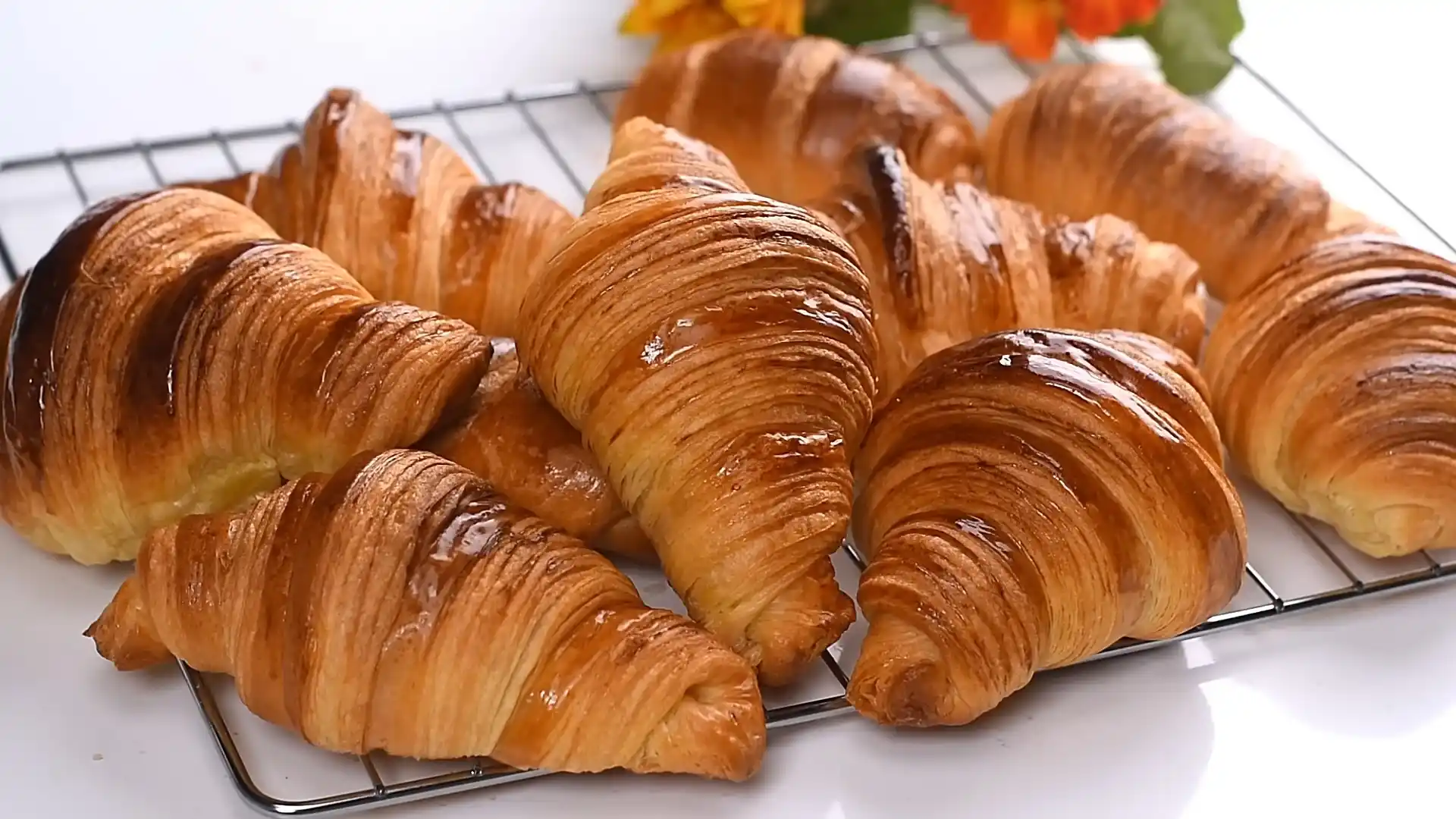Introduction to Gipfeli Recipe
I still remember the first time I tasted Gipfeli. It was a chilly morning in Switzerland, and my grandmother had just pulled a fresh batch from the oven. The aroma of buttery pastry filled the kitchen, drawing me in like a moth to a flame. As I took my first bite, the flaky layers crumbled delicately, revealing a warm, soft interior. This delightful pastry, often referred to as the Swiss croissant, has a special place in my heart and my culinary repertoire.
What is Gipfeli Recipe?
Gipfeli is a traditional Swiss pastry that closely resembles a croissant but possesses unique characteristics that set it apart. Made from a simple dough enriched with butter, flour, and yeast, Gipfeli offers a slightly denser texture and a less buttery flavor compared to its French counterpart. This pastry is typically shaped into a crescent, making it not only a treat for the taste buds but also a visual delight.

The Cultural Significance of Gipfeli Recipe in Switzerland
In Switzerland, Gipfeli is more than just a breakfast item; it is a symbol of warmth and hospitality. It is commonly enjoyed during family gatherings, festive occasions, and even casual breakfasts. The tradition of making Gipfeli has been passed down through generations, with each family adding their own twist to the recipe. Whether served plain or filled with sweet or savory ingredients, Gipfeli remains an integral part of Swiss culinary culture and continues to bring people together over shared meals.
Ingredients for a Perfect Gipfeli
Creating the perfect Gipfeli begins with selecting the right ingredients. The quality of these components significantly impacts the final product, ensuring that each bite is as delightful as the last.
Essential Ingredients for Gipfeli Recipe
The essential ingredients for a traditional Gipfeli recipe include:
- 500g all-purpose flour: This forms the base of the dough, providing structure and texture.
- 250ml warm milk: Warm milk activates the yeast, promoting fermentation and rising.
- 50g sugar: A touch of sweetness enhances the flavor of the pastry.
- 1 packet of active dry yeast (about 7g): This is crucial for leavening the dough, creating the airy structure.
- 1 tsp salt: Salt balances the sweetness and enhances the overall flavor.
- 250g unsalted butter, cold and cut into small pieces: Cold butter is essential for achieving the flaky layers characteristic of Gipfeli.
- 1 egg, beaten: Used for brushing the pastry before baking, giving it a beautiful golden finish.
Comparing Gipfeli Ingredients to Croissant Ingredients
While the ingredients for Gipfeli and croissants share many similarities, there are subtle differences. For instance, croissants often use a laminated dough technique, incorporating more butter into the layers. In contrast, Gipfeli utilizes a more straightforward method, resulting in a slightly denser texture. Both pastries, however, rely on quality ingredients to achieve that coveted flaky and tender crumb.
Step-by-Step Gipfeli Recipe
The process of making Gipfeli is a labor of love that requires patience and attention to detail. Below, I outline the steps I follow to create these delightful pastries.
Preparation of the Dough
To begin, I place the yeast into a small bowl with the warm milk and stir gently. I let it sit for about five minutes until it becomes frothy, indicating that the yeast is active. In a large mixing bowl, I combine the flour, sugar, and salt, mixing them thoroughly. I then create a well in the center of the dry ingredients and pour in the yeast mixture. Using a wooden spoon, I gradually incorporate the flour until a dough begins to form.
Next, I transfer the dough onto a floured surface and knead it for approximately ten minutes. The goal is to develop gluten, which gives the pastry its structure. Once the dough is smooth and elastic, I place it in a greased bowl, cover it with a damp cloth, and let it rise in a warm location for about one hour. This allows the dough to double in size, which is crucial for achieving the desired flakiness.
Shaping the Gipfeli
After the dough has risen, I punch it down gently to release any trapped air. I then transfer it back to a floured surface and roll it out into a large rectangle. The next step involves placing small pieces of cold butter evenly over one half of the dough. I fold the other half over the butter, pressing the edges to seal them tightly. This process creates the layers that are essential for a flaky texture.

I then roll the folded dough into a rectangle once more and fold it into thirds, like a letter. This rolling and folding technique is repeated two more times, allowing the butter to become well incorporated into the dough. After the final fold, I wrap the dough in plastic wrap and refrigerate it for about one hour. Chilling the dough helps maintain the butter’s cold temperature, which is vital for creating those flaky layers.

Baking Tips for Flaky Gipfeli
Once the dough has chilled, I roll it out again into a large rectangle and cut it into triangles. To shape each Gipfeli, I roll the triangle from the base to the tip, forming a crescent shape. I place them on a baking sheet lined with parchment paper, ensuring they have enough space to expand during baking.

Before baking, I cover the shaped Gipfeli with a damp cloth and allow them to rise for an additional thirty minutes. During this time, I preheat the oven to 200°C (400°F). Just before placing them in the oven, I brush each Gipfeli with the beaten egg, which gives them a beautiful golden color when baked.
I then bake the Gipfeli for 15-20 minutes until they are puffed and golden brown. The aroma that fills the kitchen during this time is simply irresistible. Once baked, I allow them to cool slightly before serving. The result is a batch of perfectly flaky and delicious Gipfeli, ideal for any occasion.
Variations of Gipfeli Recipe
While the traditional Gipfeli recipe is delightful on its own, there are numerous variations that can elevate this pastry to new heights. By experimenting with different fillings and flavors, I can create a personalized experience for every palate.
Sweet Variations: Jam and Cream Fillings
One of my favorite sweet variations involves filling the Gipfeli with a luscious jam or cream. For instance, I often use raspberry or apricot jam, which adds a delightful sweetness and tartness. To create this version, I simply place a spoonful of jam at the base of the triangle before rolling it up. The jam melts slightly during baking, creating a gooey and flavorful center.
Another indulgent option is to use a sweet cream cheese filling. I mix cream cheese with a bit of powdered sugar and vanilla extract, then spread it on the triangle before rolling. This variation is particularly popular during festive occasions, as it adds a rich and creamy texture that pairs beautifully with the flaky pastry.
Savory Variations: Cheese and Meat Fillings
For those who prefer savory options, Gipfeli can also be filled with cheese, ham, or other savory ingredients. A classic choice is to use Swiss cheese and thinly sliced ham. I place a slice of cheese and a piece of ham on the triangle before rolling it up. The cheese melts during baking, creating a deliciously gooey center that complements the flaky exterior.
Another savory variation I enjoy is a spinach and feta filling. I sauté fresh spinach with garlic, then mix it with crumbled feta cheese. This filling provides a burst of flavor and is an excellent option for brunch or as a light snack.
Serving Suggestions for Gipfeli
Once the Gipfeli are baked and cooled, the next step is to consider how to serve them. These pastries are incredibly versatile and can be enjoyed in various ways.
Breakfast Pairings with Gipfeli
For breakfast, I often serve Gipfeli alongside a fresh fruit salad or a glass of freshly squeezed orange juice. The combination of flaky pastry and refreshing fruit creates a balanced and satisfying meal. Additionally, a cup of coffee or tea complements the flavors beautifully, making for a delightful morning experience.
Gipfeli as a Snack or Dessert
Beyond breakfast, Gipfeli can also be enjoyed as a snack or dessert. I find that they pair wonderfully with a selection of cheeses and cured meats, making them an excellent addition to a charcuterie board. Alternatively, I often serve them with a side of whipped cream or chocolate sauce for a decadent treat. The possibilities are endless, and I encourage readers to get creative with their serving suggestions.
Common Mistakes When Making Gipfeli Recipe
While making Gipfeli can be a rewarding experience, there are common mistakes that can hinder the final result. By being aware of these pitfalls, I can ensure a successful baking experience.
Overworking the Dough
One of the most common mistakes I encounter is overworking the dough. When kneading, it is important to be gentle and avoid excessive handling, as this can lead to a tough texture. I aim for a smooth and elastic dough without over-kneading, which ensures that the final product remains light and flaky.
Not Using Cold Butter
Another critical factor in achieving flaky layers is the use of cold butter. If the butter is too warm, it will melt into the dough rather than create distinct layers. I always keep my butter in the refrigerator until I am ready to use it, ensuring that it remains cold throughout the process. This simple step can make a significant difference in the texture of the finished Gipfeli.
Frequently Asked Questions (FAQs)
What are the ingredients in Nussgipfel?
Nussgipfel, a variation of Gipfeli, typically includes a filling made from ground nuts, sugar, and sometimes chocolate. The dough is prepared in a similar manner to traditional Gipfeli, but the nut filling adds a delightful twist.
What is the secret to a good croissant?
The secret to a good croissant lies in the lamination process, which involves folding and rolling the dough multiple times to create layers of butter and dough. This technique is crucial for achieving the airy texture characteristic of croissants.
What ingredients are in a croissant?
Croissants typically include similar ingredients to Gipfeli, such as flour, butter, yeast, and milk. However, croissant recipes often call for a higher butter content and a more complex lamination process, resulting in a lighter and flakier texture.
What is the difference between a croissant and a gipfeli?
The primary difference between a croissant and a Gipfeli lies in their texture and flavor. While both pastries are flaky and delicious, Gipfeli tends to be denser and less buttery than croissants. Additionally, the shaping technique differs, with Gipfeli often being rolled into a crescent shape without the extensive lamination process used for croissants.
Conclusion
In conclusion, the Simple Gipfeli Recipe is a delightful addition to any baker’s repertoire. With its flaky texture and versatility, Gipfeli can be enjoyed in various forms, whether sweet or savory. I encourage readers to try making these pastries at home, as the process is not only rewarding but also allows for creativity in the kitchen.
As you embark on your Gipfeli-making journey, remember to embrace the process and have fun. Each batch will bring you closer to mastering this Swiss delicacy, and I am confident that you will enjoy the fruits of your labor. Happy baking!
gipfeli recipe
Ingredients
- 500 g all-purpose flour
- 250 ml warm milk
- 50 g sugar
- 1 packet active dry yeast 7g
- 1 tsp salt
- 250 g cold unsalted butter cut into pieces
- 1 beaten egg
Instructions
- Activate yeast in warm milk.
- Mix flour, sugar, and salt; create a well.
- Combine yeast mixture with dry ingredients.
- Knead until smooth, let rise.
- Roll out, add butter, fold, and chill.
- Cut into triangles, shape into crescents.
- Let rise, brush with egg, and bake until golden.
Notes
Ensure butter is cold for flakiness. Nutrition:
- Nutrifox ID: [Insert ID here]
- Nutrifox logo: [Insert logo here]
- Serving Size: 1 gipfeli
- Calories: 300
- Sugar: 5g
- Sodium: 150mg
- Fat: 18g
- Saturated Fat: 10g
- Unsaturated Fat: 5g
- Trans Fat: 0g
- Carbohydrates: 30g
- Fiber: 1g
- Protein: 6g
- Cholesterol: 40mg

